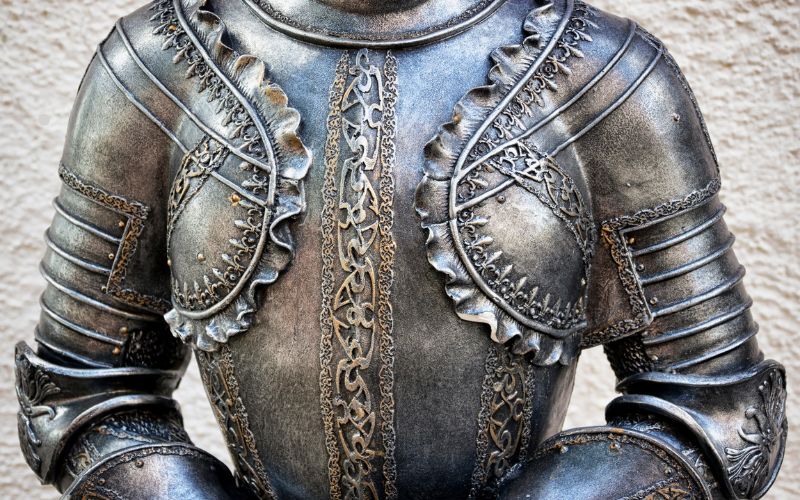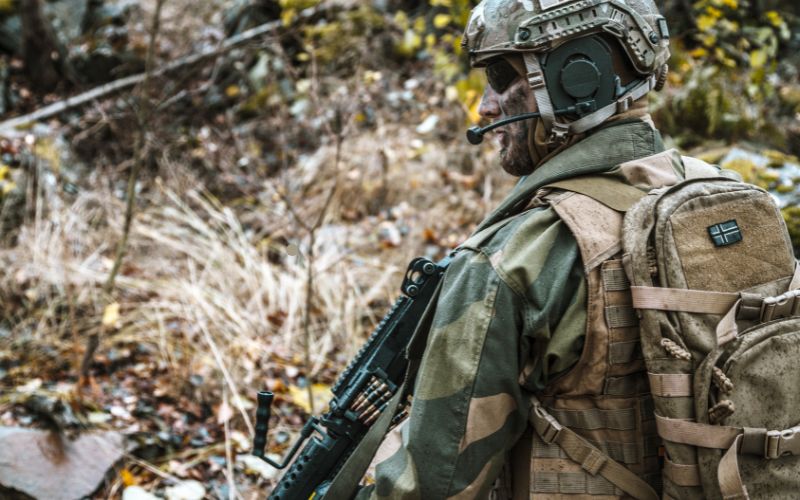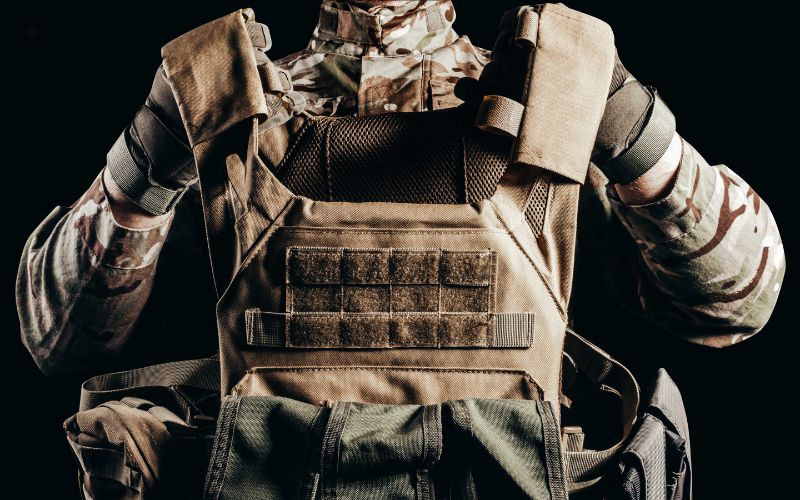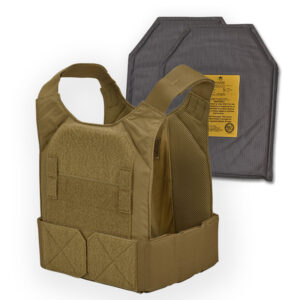Does Concealable Body Armor Protect Against Stabs and Bullets?

Personal security has become a top priority among many in the modern age. With crime rates fluctuating and threats evolving, the need for effective personal protective equipment, including body armor, has also increased. Concealable body armor is also widely sought because it is not easily noticeable and can be worn without arousing suspicion. However, a question arises: Will this type of armor effectively defend against stabbing and ballistic attacks? Let’s analyze the strengths and weaknesses of concealable body armor in different threat environments.
What are the types of Body Armor?
Body armor typically comes in two types: soft and hard armor. Both have distinct characteristics and purposes.
1. Soft Armor
Soft Armor is intended to defend against handgun rounds and stab attacks. Made of materials such as Kevlar or other man-made fibers, soft armor is flexible and light, making it easier to conceal.
2. Hard Armor
Hard armor, on the other hand, is composed of hard plates made of materials such as ceramic or steel. Hard armor protects against higher-caliber rounds, making it more appropriate for military or law enforcement use.
Armor Protection Levels
Body armor is rated based on the National Institute of Justice (NIJ) standards, with varying levels describing the threats it can protect against.
- Level IIA: Protects against lower-velocity 9mm and .40 S&W rounds and some stabbing attacks.
- Level II: Stops 9mm and .357 Magnum rounds, as well as comparable stabbing threats.
- Level IIIA: Offers greater protection against .44 Magnum and .357 SIG and is available for more serious threats while still being concealable.
Armor is regularly tested for stab resistance with the Edge Blade test, which determines its effectiveness in repelling various stabbing objects.
Effectiveness of Concealable Body Armor against Stabbing
Understanding the mechanics and nature of stabbing threats is crucial to determining the effectiveness of body armor.
The Nature of Stabbing Threats
Threats of stabbing are common in most violent altercations. In contrast to ballistic attacks, which have projectiles moving at high velocities, stabs usually depend on the precision and power of the attacker. The performance of body armor against stabbing is highly dependent on the materials and design.
How Soft Armor Protects Against Stabbing
Soft body armor may offer some protection from stabbing wounds. The multi-layered nature of materials like Kevlar diffuses and absorbs the energy of a stab. However, security is not absolute; certain designs and ratings are important.
Producers utilize specialized materials, such as Dyneema, and incorporate additional layers to enhance stab resistance. This renders the armor bulletproof and more stab-resistant for knives and similar objects.
Limitations Of Soft Armor In Stabbing Environments
Though soft armor provides some protection, it is vital to consider its limitations. Specific knives or stabbing tools can penetrate soft armor if they possess certain properties, including:
- Sharpness: Sharp knives can degrade armor intended to protect against ballistic attacks.
- Design: Knives with pointed tips and specific blade profiles can increase the likelihood of penetration.
For this purpose, it’s essential for those expecting to be at risk of such attacks to select armor specifically rated for stab resistance.
Effectiveness of Concealable Armor Against Ballistic Threats

Concealable armor is becoming an increasingly popular option for those who value both safety and discretion. With its streamlined design, most vest models offer incredible ballistic protection due to the advancements in fabric technology and the incorporation of armor panels.
1. Proven Protection for Handgun Rounds
Most concealable vests are NIJ-tested, offering protection at Levels IIIA, II, or IIA. They present a valid defense against common handgun cartridges, that is, bullets:
- 9mm
- .40 S&W
- .45 ACP
- .357 Magnum
- .44 Magnum (for Level IIIA)
This makes them extremely practical for law enforcement officers, security personnel, and citizens who fear city threats.
2. Lightweight Yet Durable Construction
Modern materials, such as aramid fibers and UHMWPE, enable lightweight yet flexible armor without compromising durability. These textiles dissipate impact energy from the bullet, significantly reducing the risk of injury.
For additional protection, many vests are ICW (In Conjunction With) hard insert-rated, with modularity that offers protection up to Level IV when needed.
Limitations of Concealable Armor Against Ballistic Threats
Despite their benefits, concealable vests do have certain limitations. It’s crucial to understand these before purchasing so you’re not caught off guard in a high-risk situation.
Limited Rifle Protection
Concealable armor is primarily designed to stop handgun rounds. Even Level IIIA vests will not protect against high-velocity rifle rounds such as:
5.56 NATO
7.62x39mm
.308 Winchester
For rifle protection, you’ll need Level III or Level IV armor plates, which are rarely included in standard concealable designs due to their bulk and weight.
Is Hard Body Armor the Best Option Than Concealable Armor?

For persons confronting greater threats, hard armor can be a preferable option.
When to Use Hard Armor
Hard armor is best suited for law enforcement officers or soldiers whose work exposes them to greater ballistic and knife threats, such as in higher-risk environments with significantly higher threat levels.
Hard Armor Specifications
Hard plates can be inserted into soft carriers for a balance of concealment and protection. Hard armor plates are manufactured to different levels of NIJ, with Levels III and IV providing the maximum protection against armor-piercing ammunition.
Weight and Concealment
One disadvantage of hard armor is its bulk and weight. Although some newer materials have greatly minimized weight, hard armor is generally less concealable than soft armor. This can be a determining factor for civilians seeking discreet protection.
Tips For Selecting The Right Body Armor
Selecting the right body armor requires thorough consideration of individual needs and potential threats.
1. Personal Threat Assessment
Selecting the correct body armor begins with determining the threats you might experience. Ask yourself:
Type of Threat: Do you face more stabbing or ballistic dangers?
Environment: Do you work in a high-crime neighborhood, or is your line of work generally dangerous?
Comfort and Concealability: Can you wear the armor comfortably for an extended period?
2. Customization and Fit
It’s also important to choose armor that fits properly. Armor that doesn’t fit well will decrease effectiveness and comfort. Most manufacturers provide adjustable designs or custom fit for optimal fit.
3. Weight and Comfort
Lightweight vests enhance comfort, particularly for extended wear. Check if the armor is made from thin, breathable fabric and features ergonomic armor panels.
4. Coverage Area
Others offer longer coverage of the abdomen, flanks, and even neck. The more coverage you have, the better protected you will be, but the less mobile you will be.
5. ICW Options
There are vest models marked ICW that function In Conjunction With hard inserts. This provides you with the ability to add more protection when needed.
6. Durability
Look for durable construction that can withstand everyday wear and tear. This is especially required for security personnel and police officers.
Conclusion
In conclusion, concealable body armor can provide significant protection against both stabbing and ballistic attacks, although it is essential to be aware of its limitations. Soft armor is adequate for handgun defense and certain stabbing threats, whereas hard armor is more protective against higher-caliber rounds and more serious stabbing devices. Ultimately, body armor selection should be based on personal needs and the specific threats one may encounter.
Frequently Asked Questions
Can soft body armor stop all knives?
Soft body armor can offer some protection against knives, but its effectiveness will vary depending on the design and materials used. For greater security, it is recommended to use armor specifically rated for stab resistance.
Is hard armor always superior to soft armor?
Not always. Hard armor offers superior protection against high-caliber rounds, but it is heavier and less concealable. Soft armor is lighter, more comfortable, and best suited for normal use in less threatening surroundings.
How do I select the proper amount of body armor for my purposes?
Assess your threat level, consider the threats you might encounter, and ensure that the armor fits properly. Consulting with professionals or manufacturers can also help guide your decision.

